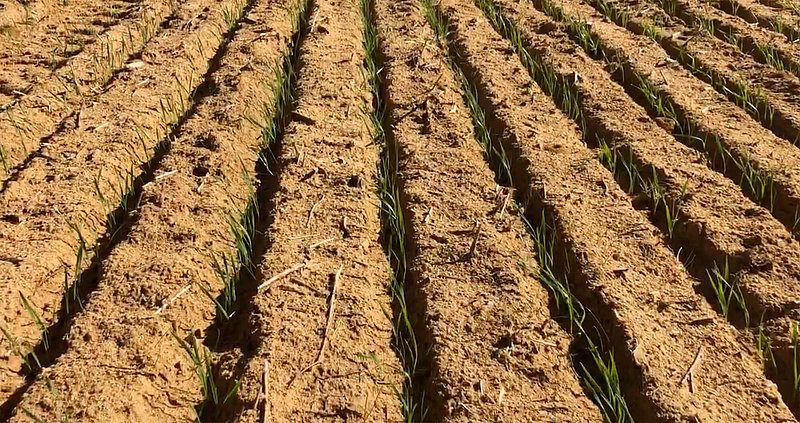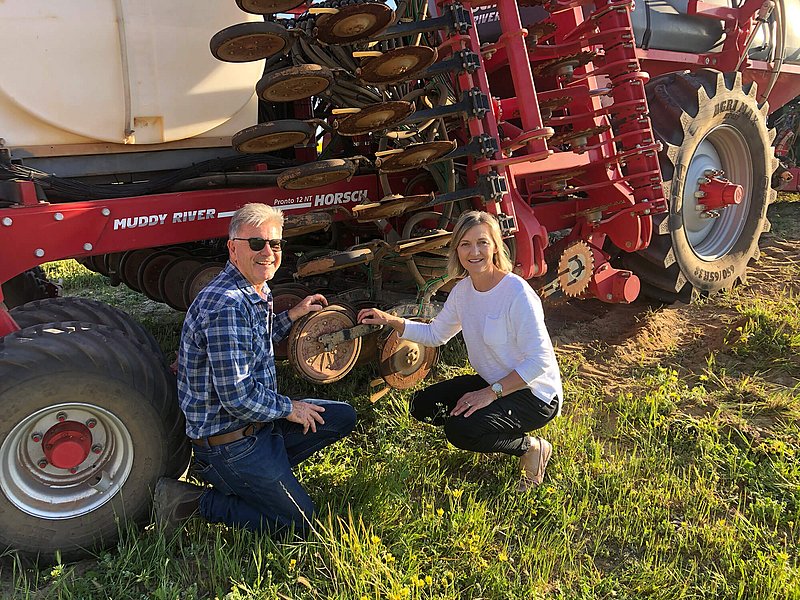
Rethinking REGEN with the Pronto NT
Western Australian Wheatbelt farmer Stuart McAlpine believes with the right aims, the right inputs and the right technology, just about any farm can make an economically successful transition from conventional farming to a regenerative system. The Australian journalist Andrea Mayes talked to him about his strategy.
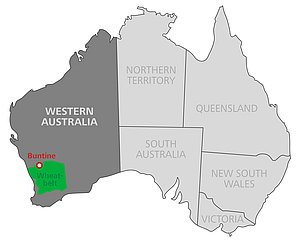
Across the world demand for ‘clean and green’ food is on the rise. Many consumers want to know where and how their food is grown and are willing to pay more for sustainable methods and higher nutritional values.
In Western Australia, after many years and trials, the principles of regenerative farming are gaining ground – literally – and food from regenerative farming is beginning to secure consumer interest. Regenerative, or hybrid, farming is occupying a significant gap between true organic production and industrial farming practices, as more farmers discover the advantages of a biological farming system that encourages soil health and sequesters carbon.
The area known as the Wheatbelt forms the heartland of Western Australian agriculture, making up nearly half of the State’s agricultural production. It spans almost 155,000 square kilometres in the south-west of the State, mostly east of the city of Perth, extending approximately 350km east and 425km from north to south. The region is home to approximately 73,000 people, with close to a quarter of them engaged in some form of agriculture.
Climate change is making the Wheatbelt’s semi-arid conditions even more challenging. Rainfall is extremely variable, delivering just 330mm in a good year. Western Australia has just posted its warmest winter on record. Perth’s mean maximum was almost 20 degrees centigrade this winter, and statewide rainfall was 46% below the seasonal average.
2018 saw some of the best margins ever for Western Australian grain growers and 2019 brought some of the worst losses. Growers are faced with the urgent need to increase efficiency and yields, and overcome constraints to production on marginal soils in these low rainfall areas. With mounting evidence of soil degradation and increasing resistance to plant protection agents, some farmers began to investigate and implement techniques of regenerative agriculture with a particular focus on soil biology, plant health and ecologically integrated production.
A soil champion
Stuart McAlpine is a 4th generation Wheatbelt farmer. He has been farming for almost 40 years on 5000ha at Buntine near Dalwallinu in the Northern Agricultural Region. He and his wife Leanne employ two permanent staff and two casual seasonal staff.
“If you do a strip trial with zero fertiliser, the results aren’t going to be pretty – until you change the soil biology.”
Though Stuart’s forebears used the traditional farming practices of the times, his father Ian was more progressive, experimenting with fertiliser use and new crop varieties. Ian passed on to his young son a passion for nature and natural vegetation and a keen interest in the nutritional value of good food.
Terrain at the McAlpine dryland farm is mostly flat with only a few gentle slopes. Soils are light sandy loams with a mix of some heavier soils and poorer shallow gravel soils. Winter temperatures can be cold but frost is rarely a problem and summer temperatures can rise to over 40 degrees for days at a time.
Stuart became a pioneer of no-till cropping in 1996 and in 1999 was awarded Western Australia No-Till Farmer of the Year
In 2007, after another very dry season and a farming system that required increasingly higher inputs to achieve a good crop, the transition from high input farming to a more biological approach began.
Stuart said it was the reduction in productivity and the awareness of changing rainfall patterns that sharpened his focus on soil health and the importance of encouraging biological activity in the soil.
“I think most farmers want to be doing the right thing by the environment,” he said. “Many of them haven’t been harnessing the true abilities of natural systems because for a long time it has been very profitable to replace them. By not allowing natural processes to prevail, there’s been an over-emphasis on the physical and chemical components of soil when what’s really needed is more understanding about how to stimulate and encourage soil biology. Inefficient systems lead to hard, degraded soil, with yields stagnating or decreasing, and the need for more and more artificial inputs. Costs increase and the health of plants and soil declines along with your profit margins.
The main aim of regenerative farming isn’t to simply increase yields. The aim is to increase efficiency and productivity by decreasing artificial inputs and pesticides, creating better soils, improving plant resilience naturally and increasing nutrient density. Our yields haven’t suffered significantly under a regenerative system and we get exceptional feedback on quality. We haven’t graded for small grains since, though neighbouring farms grade theirs occasionally. Conventional farming methods have shown themselves to be degenerative, disregarding the natural cycle of productivity and suppressing the natural ability of plants to actually repair the soil.
There’s still a lot more to learn about advantages we can gain through soil biology but with the little we do know, we can reduce costly inputs, repair the damage, and maintain economically viable yields. Knowing this, how can we continue with the old way of doing things?”
Today Stuart grows approximately 3200 hectares of wheat, barley, oats, lupins, canola and field peas in diversified rotation, using crops to assist with cycling nutrition and weed control. He currently runs 100 head of Angus breeders, trading extra cattle depending on the season, and is investigating multispecies pasture.
He was co-founder of the Liebe Group, one of Australia’s premium grower groups. He is also a non-executive Board member of Wide Open Agriculture, Western Australia’s leading regenerative food and farming company.
In 2015, the International Year of Soil, Stuart was awarded Soil Champion of the Year for the Northern Agricultural Wheatbelt region.
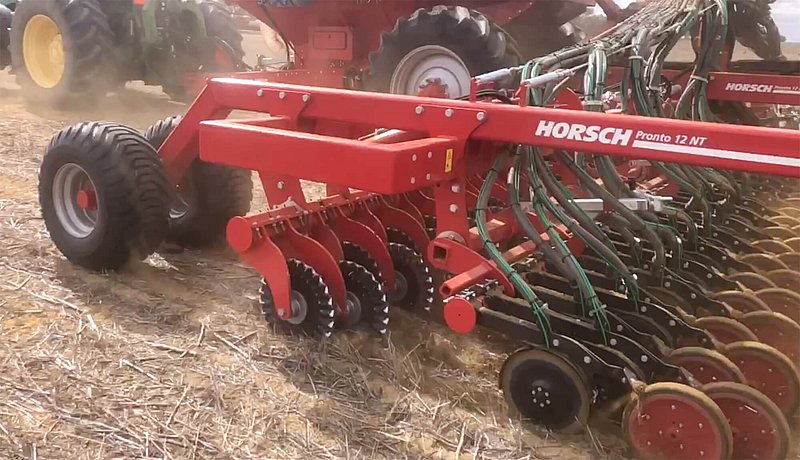
Choosing the right inputs and the right technology
The Pronto NT is a compact universal seed drill, cultivating, sowing and pressing for mulch and no till farming. The machine only cultivates the area of soil where the seed will be placed in fine tilth. TurboDisc coulters efficiently adjust to uneven soils, guarantee high coulter pressure and precise seed placement. Accurate seed placement and more even positioning of plants can improve the crop’s microclimate, producing healthier stronger plants with better root development and more disease resistance. The good tilth created by the Pronto’s front coulter is essential for optimal root penetration and the most ideal take up of moisture and nutrients.
“I wanted great design and advanced precision engineering, built-in flexibility and a machine that’s easy to use and maintain. I found it all with the HORSCH Pronto.”
Stuart said his 12m HORSCH Pronto NT seed drill is integral to his regenerative farming practice. “Here in Western Australia, yields from conventional and regenerative farms are quite low and variable, ranging from 0.6 tonnes per hectare to 3+ tonnes per hectare. Farms here tend to cover big areas of land to achieve economies of scale, which means machinery sharing isn’t a viable option, and the percentage of capital tied up in machinery can be very high. It’s hard to find a machine that ticks most of the boxes most of the time yet it’s vital to have the right gear. Ideally, I wanted great design and advanced precision engineering, built-in flexibility and a machine that’s easy to use and maintain. I found it all with the Pronto,” he said.
Some key benefits the Pronto delivers for Stuart are extremely precise seed placement and embedding for uniform germination, a high sowing speed to take advantage of weather windows, good tolerance of varying seedbed conditions, minimal disturbance to fungal pathways and microbiota in the soil, and low maintenance requirements.
Stuart’s customised set up includes a 6000-litre seed wagon and 4000-litre plus 2000-litre for liquid fertiliser and biostimulants, coupled to another 2000-litre liquid unit mounted on the bar. He said for eight years, he’s been trialling liquid fertilisers and biostimulants to reduce synthetic fertilisers. The biostimulant, TM Agricultural, developed and produced in New South Wales, stimulates the growth of soil microbes in all soil types, leading to increased carbon and organic matter, higher nutrient density in plants and improved animal health.
Stuart has achieved significant reductions in amounts of inorganic fertiliser, herbicides and insecticides, and has only applied fungicide three times between 2007 and 2016. “As well as the biostimulant, we use liquid compost extracts made up here on the farm and other carbon-based nutrients,” he said. “We apply the liquid through the same opener with the seed to give the plant the best start it can possibly have,” he said. “We apply both liquid streams at about 50-litres per hectare and come back with a foliar application later. We’re sowing at 14-15km per hour with very high precision – perfect seed placement across the bar. It’s so accurate I can come back and hit the crop with a knockdown without even waiting for germination, which gives me a few more days of weed control. We’re using a lot less fuel, achieving more timely planting and causing minimal soil disturbance. The Pronto leaves more stubble on top and sows into it easily. If you’re establishing pastures, you can just sow into the existing cover without having to kill it off. We’re getting an excellent strike rate. All viable seeds are germinating and growing. We’ve had lots of comments from staff and farm visitors about the way the crop jumps out of the ground.
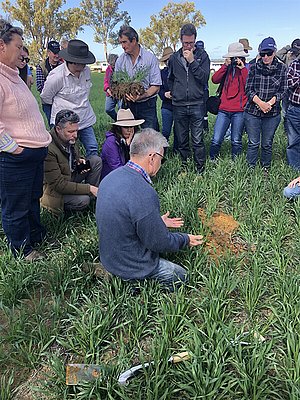
It’s incredible to see. It’s partly down to the products we use, the whole regen journey I’ve been on, and the Pronto’s ability that we’re getting amazingly strong germination through all the crops,” he said. “With some of the soils here, it used to be like trying to dig into concrete. Or if you got 25mm of rain, the ground would be so sticky you’d grow 25mm walking across it. Now, even the heavier soils are still friable when they’re bone dry. I can dig down to 15cm and it’s friable summer and winter. It feels like potting mix. After rainfall, it doesn’t stick. It barely stains your hands. It’s very satisfying to see this.
These changes have been driven by increased biological activity and higher organic carbon levels. Where we used to get roots mass to 10cm deep, we’re now seeing some of them mass to 20-25cm.”
More is not always better
Great design and engineering can have a quality of beautiful simplicity, like the Goldilocks theory: not too much, not too little, but just right. Stuart believes this theory applies perfectly to the whole philosophy of regenerative farming. The way the natural soil microbiota system evolved is incredibly complex but what it delivers has a beautiful simplicity.
“More is not always better, whether it’s rain, seeds, fertiliser, plant protection inputs, technical innovations, or even yields. More can be destructive. And it can make us lazy. It can make plants lazy too. They need to be stimulated to engage in these wonderful symbiotic soil processes.
Farmers are in a unique position to observe natural cycles on a grand scale. Our brains can sense and intuit so many things. I think we may have lost some powerful observational skills by moving into prescriptive farming and relying on what we’re told to do. Instead of throwing more at the problems, we need to re-engage our senses: dig, look, smell, touch, test, and think about all the factors that come into play. What’s really going on?
If you do a strip trial with zero fertiliser instead of more fertiliser, the results aren’t going to be pretty – until you change the soil biology. I think this is the way the people at HORSCH work too,” he said. “Considering all the factors and coming up with smarter ways of addressing them. Not afraid to ask, not afraid to learn, not afraid to change.
For our style of farming the Pronto is essential, and it’s not just the precision of the seed placement but also the way it’s been engineered for flexibility, allowing adaptations to particular requirements, such as liquid biostimulants. Just as I am a part of this regenerative system, so is the Pronto. It’s easy to use and just right for what we need to achieve. It’s not over-engineered. It leaves room for intuitive use,” he said. “Most types of farming would benefit from the Pronto, and for someone considering the transition to regenerative farming, it’s a great start.”
